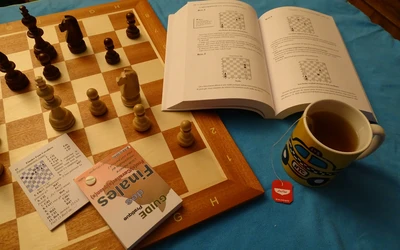
Lessons from Great Masters: Ideas That Inspire Every Player
Some games live forever, and I often find myself wondering how they even happened — what were those masters really thinking? There are games that left me speechless, games where I couldn’t even understand how they saw certain moves, as if they were magicians of their time. Yet I believe these games are still alive today, and their lessons remain just as important. That’s why I want to share them with you now.Fischer vs Taimanov
In this endgame between Fischer and Taimanov, Fischer reminds us that even in seemingly simple positions, there is still room for strategy and tactics. After Black’s inaccurate push of the b6 pawn (instead of centralizing the king to d6), Fischer slowly improved his position: centralizing his king, fixing weaknesses on the queenside, and restricting the knight with c3. By placing Black’s pawns on the same color as his bishop, Fischer patiently increased the pressure until the exchange of rooks became decisive.
<iframe width="600" height="371" src="
Step by step, Fischer guided his king to the key square b5, targeting the weak b6 pawn. With his king pressing on the queenside and his bishop dominating the kingside, the picture became clear: Fischer had placed Black’s pawns on the color of his bishop, leaving the knight powerless to defend all weaknesses. In such positions, the bishop is simply superior. Just when it seemed Black had built a fortress, Fischer sacrificed his bishop to demonstrate the power of playing against two weaknesses.
Reti vs Grau
This game between Reti and Grau shows why both opening theory and strategic understanding matter. The line played is still modern even today, but Black’s misplaced pieces led to long-term problems. The key mistake was playing ...Bd7 too late. Instead, Black should have first played the maneuver ...Bd7 and ...Bc6 to exchange the bishop. Because this plan was missed, weaknesses on c5 and d5 became long-term targets. What makes this game memorable is how Reti played with simple, natural moves — and still achieved a clear advantage very quickly.
<iframe width="600" height="371" src="
Smyslov - Liublinsky
In this game, I’ll leave you to think about one remarkable bishop move. When I first saw it, I wondered if Smyslov could see into the future — it was such a deep positional idea. The move highlighted the long-term weakness of the b6 square, a detail that wasn’t obvious at first. With patience, Smyslov slowly improved his position, and once everything was placed perfectly, he found a way to make it even better — ultimately converting the advantage into a win.
<iframe width="600" height="371" src="
Thank you for reading and joining me on this journey through these timeless games. I hope you found inspiration and lessons to take into your own play!
- Anastasia Grozdanovic
You may also like
 WFM grozdanovic_a
WFM grozdanovic_aCan You Find the Brilliant Move?
Hello everyone! I’ve prepared three puzzles for you today — each one hides a small spark of creativi… IM Neimar24
IM Neimar24A classic — an indispensable step!
In today’s blog, we’ll take a look at the game Spassky – Fischer. IM Neimar24
IM Neimar24Matthias Bluebaum - The Dark Horse!
In this blog, we will talk about Matthias Bluebaum. IM doughnut42
IM doughnut42Grand Prix vs Early e6+d5 Plan: A Complete Breakdown for White
As promised, I'll be dedicating a post solely to counteracting Black's early e6+d5 setup in the Gran… CM HGabor
CM HGaborHow titled players lie to you
This post is a word of warning for the average club player. As the chess world is becoming increasin… WFM grozdanovic_a
WFM grozdanovic_a